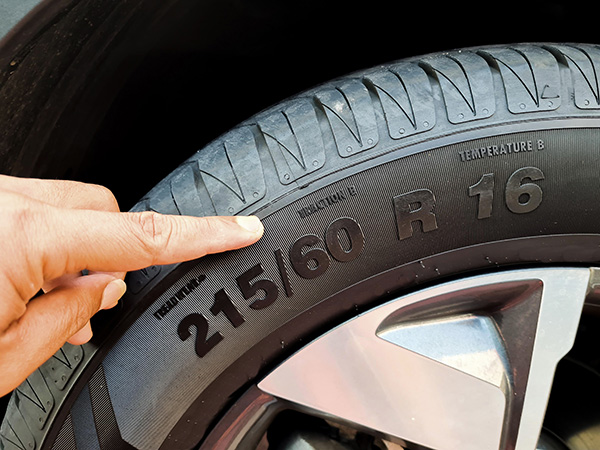
When you glance at your car's tires, you might notice a series of letters and digits imprinted on the side. These aren't just random characters; they hold valuable information about your tires' specifications and capabilities. Understanding these codes can help you make informed tire maintenance and replacement decisions.
Tire Size Codes
One of the most important parts of a tire code is the size specification. This usually combines letters and numbers such as P 215/60 R16. Here's what each part of this code means:
- P (or LT, ST, T): This letter indicates the tire type. 'P' stands for Passenger vehicle, 'LT' for Light Truck, 'ST' for Special Trailer, and 'T' for Temporary (spare tires).
- 215: This number is the tire width in millimeters. It measures the width of the tire from sidewall to sidewall.
- 60: This is the aspect ratio, a percentage representing the height of the tire's cross-section compared to its width. In this case, the height is 60% of the tire's width.
- R: This letter stands for Radial construction, which is the most common type of tire construction today.
- 16: This is the diameter of the wheel in inches that the tire is designed to fit.
Load Index and Speed Rating
Another crucial part of the tire code is the load index and speed rating, often found together after the tire size, such as 95H:
- 95: The load index is a numerical code that indicates the maximum load a tire can support when properly inflated. You can refer to a load index chart to find out the exact weight capacity.
- H: The speed rating tells you the maximum speed at which the tire can carry a load safely. Each letter corresponds to a specific speed; for example, 'H' means the tire can safely sustain speeds up to 130 mph.
Tire Age and Manufacturing Information
Tire codes also reveal the manufacturing details, which are essential for determining the age and potential lifespan of the tire:
DOT: The Department of Transportation (DOT) code indicates that the tire meets all federal standards.
Manufacturing Date: Following the DOT code is a four-digit number representing the week and year of manufacture. For example, '2618' would mean the tire was manufactured in the 26th week of 2018.
Seasonal and Special Purpose Markings
Certain tires have additional markings that indicate their suitability for specific conditions or uses:
- M+S (Mud and Snow): Tires with this marking are designed for better performance in mud and snow conditions.
- 3PMSF (Three-Peak Mountain Snowflake): Indicates that the tire meets severe snow service requirements and is suitable for winter driving.
- Run-Flat: These tires are designed to be driven on for a short distance even after losing air pressure.
Need new tires? Let South Park Tire & Auto Center help you find the perfect match. Stop by today!